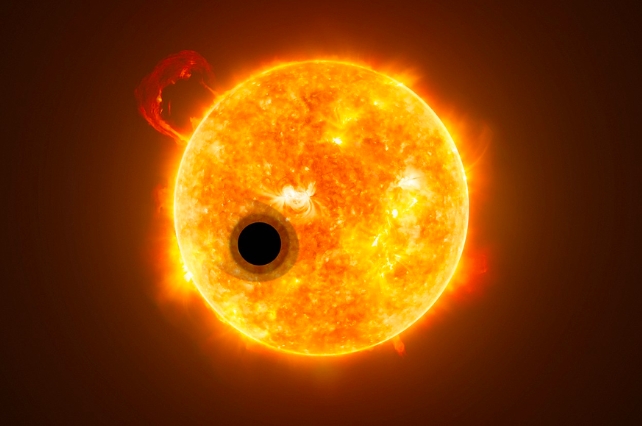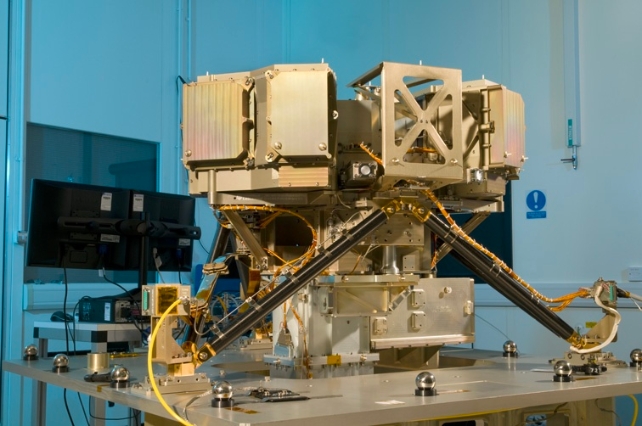 Illustration of WASP-107b, a unique gaseous exoplanet. (LUCA School of Arts/ Klaas Verpoest, Johan Van Looveren/Achrène Dyrek/Michiel Min/Leen Decin/European MIRI EXO GTO team/ESA/NASA)
Illustration of WASP-107b, a unique gaseous exoplanet. (LUCA School of Arts/ Klaas Verpoest, Johan Van Looveren/Achrène Dyrek/Michiel Min/Leen Decin/European MIRI EXO GTO team/ESA/NASA)Exoplanets are definitely a bit of a hot topic at the moment. Throw in a sprinkling of the James Webb Space Telescope (JWST) and you have the recipe for magic!
I still cannot believe that we have discovered, yes actually discovered 5,539 exoplanets and there are more being confirmed every day! The first exoplanet was discovered in 1992 and now over five and a half THOUSAND planets around other star systems are known!

A team of astronomers have been exploring one in particular, the enigmatic WASP-107b using JWST and have made some incredible discoveries about its atmosphere.
Exoplanets are planets in orbit around other stars. WASP-107b was discovered in 2017 using the Wide Angle Search for Planets (WASP) array of robotic telescopes.
It's a gaseous exoplanet with a mass similar to Neptune but with a diameter closer to that of Jupiter and 200 light years away, orbiting a star (WASP107) in the constellation of Virgo.
The mass and size of the planet means its atmosphere is somewhat 'fluffy' and rather more rarefied than planets in our Solar System.
A team of astronomers have recently used the Mid-Infrared Instrument (MIRI) on board JWST to explore WASP107b (the second planet in orbit around WASP107) which, because of its thin fluffy atmosphere, enabled them to peer further and deeper than usual revealing new atmospheric details.
Using MIRI, the team studied the atmosphere and found evidence of water vapor, sulfur dioxide, clouds of 'sand' but surprisingly no sign of methane.
The observations have provided new insights into exoplanet atmospheres. The 'fluffy' nature of the atmosphere allowed photons from the host star WASP107 to penetrate further leading to the formation of sulfur dioxide and was completely unexpected.
Clouds were also detected although unlike clouds on Earth, these were composed of tiny silicate particles, the main component of sand!
On Earth, water commonly freezes at low temperatures but in gas giants where the temperature can be anything in the region of 1000 degrees, silicate particles can freeze often leading to the formation of clouds!

The temperatures on WASP107b are around 500 degrees and at these temperatures the clouds that have formed from silicate particles produce rain which falls and evaporates in lower levels before being lifted back up and reconvenes again into clouds.
One surprising discovery, or rather non-discovery was the absence of methane. Methane was expected but its absence points to the possibility that the atmosphere is warmer than first thought.
The studies of WASP107b have finally started to unravel the diversity of exoplanet atmospheres and the complexities of chemical interactions on alien worlds.
Without JWST however, this research would not be possible, and along with MIRI we are starting to reshape our understanding of planetary evolution.
This article was originally published by Universe Today. Read the original article.





0 Comments